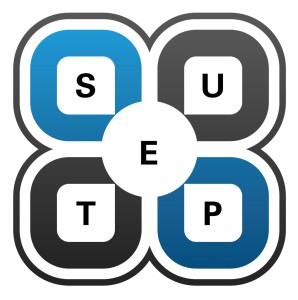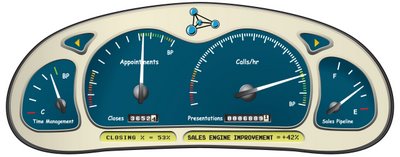Sales….. Like Lightning
“How can we achieve a near-term sales increase combined with long-term sustainable revenue growth?”
This is a question that hangs in the air during virtually every conversation between owners, C-Level and Sales Management. One of the tried and true methods to achieve at least half of the equation is to conduct a sales blitz. The trick is how do you morph a temporary sales boost into the “new normal”?
A sales blitz is designed to fulfill the urgent need of increasing sales pipelines immediately. And most sales organizations know the basic “flavors” of blitzes with formats being designed for, at best, impermanent returns. I say both goals of an immediate sales bump and establishing the “new normal” are possible.
It’s a challenge melding lead generation, continual development training and motivational sales meetings, I grant you, but if you run a Blitz using this system be prepared for a revenue growing, “sales climate changing” event.
 S.E.T.U.P. your team for success
S.E.T.U.P. your team for success
Strategy
This step should start minimally 60 days before the blitz. Map out EVERY detail from the initial touch, phone dial, live visit, all follow-up and ongoing relationship builders and more. At the planning meeting ask these questions:
-
What market/area are you attempt to penetrate?
-
What is the goal(s) of the blitz? Short term, Mid Term and Long Term?
-
How can you warm up the market/area you will be blitzing?
-
What will you use to warm them up? What frequency? What platform?
-
What products fit/are most desired by this market?
-
What vendors should you team with?
-
What should your teams have with them? Brochures? Giveaways?
-
What will be the competition’s reaction?
These questions are a great starting point but you have to go deeper yet. We all know long term sales success is about the grind. Doing the little things everyday that build best practice habits that ultimately pay off. It’s the same here only we need to “microwave” the process a bit.
Education
Day 60 should begin with teaching of an effective lead generation system and every system is made up of 3 things, tactics, strategy and learned skills.
Many of the tactics and strategies that need to be adopted are here https://matriximpact.com/site/?p=1125.
Your team also need SPECIFIC skills. Those skills need to be practiced in real-life simulations tightly tied to the reality they will experience. Here are 5 of the skills that will be required of anyone participating in the Blitz.
-
Client research and its application
-
Tele-Sales: Warming up the drop-in
-
Lobby Intro: Getting past the Gate Keeper or at least gaining needed info
-
Benefit Value Discussion: Setting the hook to continue the discussion
-
Facility Walk-through Technique: How do you maximize contact with the right person?
-
Wrapping up the visit: Very few drop-ins will result in a sale. The real goal is increase and expand in your sales pipeline
There should be a regular schedule of training leading up to the Blitz event. Refresher classes, reviews and Blitz day reminders for everybody involved. This is why there needs to be a Blitz QB. One who can coordinate information, learning and distribution for all the Blitz teams.
Tools
There are many tools needed for a successful Blitz. Call Template, all lead generation letters, impact touches, pairing maps, company intelligence, handouts, giveaways schedules and more, all customized for your business and for the goal of your Blitz.
The key is to be prepared and start the assembling of your tools sooner rather than later.
Users & Interface
Everything management does HAS TO BE hands-on. Management needs to be the great guiding hand in the structure of the Blitz but it also needs to be a participant during the Blitz days. I have had everyone from Middle Managers to Vice President’s of Sales to Owners come up to me after a Blitz and effusively say “John, thank you for making sure I was on a Blitz team”.
Think about it. They get out of the office routine of meetings and problems and get to spend minimum 2 days with sales people and customers. They find out what the ground troops do on an everyday basis and what has changed over the years. They hear first hand customer’s issues and concerns. It can reinvigorate the most curmudgeonly of management and this isn’t even the best reason.
When a prospect/customer is introduced to the Vice President or Owner the look on their face is priceless. I mean WOW, the VP or Owner took time out of her/his day to come and visit. Few gestures have a greater customer service impact than this.
Sales people MUST take ownership as well. They have to be involved in all strategy discussions. There a a multitude of tasks that need to be divvied up among the sales team. A sales person has to be the in-office Blitz QB. This is a critical position. Their job is to coordinate all activity. They have to stay in touch with the teams and provide updates. They are also troubleshooters as opportunities or problems come up. Depending on the size of the blitz you can have as many 2 or 3 QB’s to ensure you have proper support.
The bottom-line: from ownership to front-line sales, everybody plays a crucial role in the execution of a successful Blitz .
Performance
This is what it is all about! You need to GUARANTEE your team is prepared, practiced and energized. If you do you will be SETUP! to have a successful Blitz day(s) and to continue your success throughout the year.
After your strategy meeting(s) you need to conduct
-
Weekly update meetings: No longer than 30 minutes but it is CRITICAL to make sure everyone is completing their assigned duties, remember there is no small job when executing a Blitz.
-
Minimum of 3 education sessions: Would you rather your salespeople practice on their customers or with you?
-
Blitz Kickoff: Night before the Blitz you cover every detail and logistic necessary and take all questions. Team & territory assignments, Car stock, Vendor presentation and motivation. Make sure you have daily goals and prizes for performance as well.
-
Blitz Day: Everybody rallies at central location, unless territory demands call in. You go over any final pieces and send them off to kick BUTT.
-
Blitz Day Re-Cap: Everybody reconvenes at central location. You cover the results, hand out daily prizes, share successes, what worked and what didn’t then break for dinner.
-
Blitz Wrap Up: Similar to Re-Cap. You also need to triage all leads and assign to proper parties. Agree on timing of followup meetings to check progress of leads, generally think 2 weeks out, a month out and 90 days out. This will allow you to see “the toothpaste getting squeezed through the tube”.
Below are the Performance results from a tightly run, well executed Blitz.
You need to lay the ground work for continued nurture prospecting that leads to a steady stream of sales revenue for the foreseeable future. This process focuses on installing habits in your sales team and helping to either create or augment a lead generation system. When executed correctly, a Blitz will bring in immediate sales dollars and set the tone for ongoing success within your current selling environment.
A Blitz is not a band-aid type solution to improving sluggish sales. It’s an organic, holistic method to improving today’s sales revenue AND your overall sales atmosphere, establishing a “new normal” to your team’s everyday sales activities and results.
How to Improve Your Conversion Rate 50% When Calling Prospects Part 3 of 3
The purpose of the previous posts were to warm up the “environment.” You want the potential to become “aware” of who and what you are so when they are reached, you have positioned yourself correctly in their mind. If this is accomplished, best case is they reach out to you, worse case is they are at least receptive to your call.
Today’s post we are going to focus on what the potential needs to hear to schedule the appointment. All the research and prospect warming up in the world doesn’t mean diddly if we cannot communicate our message with the potential customer.
Rule 1
The ultimate goal of a call, in this situation, is to set a Discovery Appointment. The goal IS NOT selling your product/service. This might seem pretty simple but it’s a common blunder salespeople make very frequently.
Often times, salespeople think that if we manage to get the potential on the phone that we need to perform a total data dump on them. This is a critical error. You have invested a chunk of time researching and warming up the contact so as to differentiate yourself from the competition, then you go and lay an egg the first chance you get.
K.I.S.S. Keep It Simple Salesperson
If you can’t provoke their curiosity then this attempt to land an appointment is OVER. The potential needs to hear what is relevant and what makes an impact on their business to make a decision on seeing you, that’s it. Here are some topic area examples:
-
Incorporating your relevant pre-call research.
-
How your product/service solves problems or issues your prospect faces.
-
Actual results you’ve achieved with other customers.
-
What might pique your customer’s interest based on your knowledge of their business and the market.
Opening Line
There are 4 points to hit in your opening line.
-
Identify yourself
-
Remind them of your warm-up touches and/or any other relevant information learned from research
-
Hit them with an Impact Line, something that demonstrates how you can help them in about 7 words
-
Engagement question: You have to get the buyer to engage early in the phone call

Below is a diagrammed example of a very successful Opening Line my clients have used to great success.
-
Hi Mr. Jones this is John Kolencik with XYZ (Identify yourself)
-
you might have seen the (Information piece: article/chart etc.) that I sent to you. (Relevance to the Potential)
-
We help/improve/increase our clients’ ______ (in these areas) (Impact to the Potential)
-
I was wondering what (are) (the) ______ (areas) (do you) (have you ever) currently are (trying to improve)? (Engagement Question)
I tend to use the warm up touches reference but you can substitute that line for something about the company itself, industry or market.
If you have done your job by quickly demonstrating you are knowledgeable/helpful and can potentially bring significant value to the table, you should get a response to the Engagement Question.
Keep in mind that the Engagement Question often leads to a few more questions from the potential before you get to the endgame.
Final Objective
This has all been about getting the appointment, so now we have to segue into asking for it.
Here is a sample:
“Well, Jerry, let me share with you my process, in terms of how we work. I’d like to suggest getting together for about 30 minutes. What I’d like to do is come in, learn a little more about your situation and also share some ideas I think you’ll find valuable. I’m not going to try and sell you anything. If we think there’s a fit at that point, we can put our heads together and figure out where to take it from there.”
You are now ready to ask for the appointment
“Jerry, do you have your appointment calendar handy?”
Never try to force the appointment in the current week unless the prospect volunteers it. Always shoot for a week out from the date of the phone call.
Handling Objections
You may have to face one of the following three objections. 
-
“Could you send me some literature instead?”
-
“I’m really busy. Could you call me back next week?”
-
“We’re already working with someone in that area.”
Let’s discuss some ways to handle each of these common objections.
“Send Me Literature.”
Your best response is as follows.
“Sure, I’d be happy to send you literature, but at XYZ, we are really in the tailored solution business. I’ve got 20 different customers on 20 different programs, so I’d have no idea what to send you based on the uniqueness of your situation.
Let me make a suggestion. Instead of me sending you literature, why don’t we get together for 30 minutes, I think you’ll find it very rewarding, and I’m not going to sell you anything. I just want to see if there is a way to add value to your company. Would the week of the 24th work for you?”
“I’m really busy can you call me back next month?”
Don’t back away. Go ahead and respond like this.
“Sure, no problem. I run a really busy schedule also.
Let me make a suggestion. Instead of me calling you back next month when I’ll probably have to re-remind you of who I am and what we do, why don’t we set up an appointment for x# of weeks out, and I’ll tell you what, I’ll call to confirm the appointment a week prior to it to make sure it’s still good. Would the week of the 18th work for you? Perhaps on Wednesday at 10 am or so? Could you check your calendar to see if it’s convenient?”
“We’re Already Working with Someone In That Area.”
Employ this response.
“No problem. We certainly appreciate it when our customers show us loyalty, but as it happens, most of our current customers were already working with someone prior to aligning with us.
Jerry, we’re a bit different in that we don’t often compete as much as cooperate with current vendors as a means to help a company become best practice. The whole focus is around adding value to your company, often in a complementary manner to current vendor.
Jerry, let me make a suggestion. Why don’t we set an appointment for 30 minutes one day? Maybe there’s a fit, maybe not.
Regardless, I think you’ll find it a really interesting exchange. If x date is bad, how about during the week of ______?”
Final Thoughts
In this post I give you specific examples of words and phrases. Use this post for the structure of your calls. Modify the words as needed for your product/service, market or industry so your own personal voice will come through.
Marketing Sherpa conducted a study that said 75% of everybody you touch with your lead generation efforts will buy something either from you or your competition. But if you take a day, week or month off who knows what opportunities you may miss.
Lead generation is a customer engagement process. It is both cumulative and immediate in varying degrees based on strategy and tactics. It can be big bang or slow boil but the key is not to treat it as binary. Lead gen needs to be part of your daily, weekly and monthly DNA.
I promise, if you practice the tactics in these blog posts and make lead gen a part of your everyday routine you will see colossal gains in your sales revenue.
…..and remember you can either make sales or make excuses but you can’t do both!
How To Improve Your Conversion Rate 50% When Calling Prospects Part 1 of 3
I do not believe in classically defined cold calls; Picking up the phone and calling a list of contacts that we know nothing about. We live in a digital age and those types of calls are analog. I do believe, as professional sales/business people, that we absolutely NEED to make as many calls to potential clients as possible. The question is how we do it.
There is soooo much we can do to warm up these calls and to make them more impactful than our predecessors could possibly imagine. The first part of this strategy starts with our willingness to put in the time to do research BEFORE picking up the phone. I am not talking about writing a thesis on each potential but there is work to be done BEFORE we pick up the phone.
The Library and Linked In
Almost every suburb now has state of the art library facilities that you don’t even have to go the building to use and it only costs you a trip to the library to get a library card to allow you access. They have online research tools like Reference USA, Regional Business News or Glassdoor, any one of these will give you more information than you can possibly imagine.
Then there is Linked In. This is the greatest free research tool ever invented. You can find out, in great detail, the professional specifics of virtually anybody or any company. The search tool is also top notch. What I like most is being able to search by school as well as other categories. I mean why not start with people you either went to school with or attended your school?
End of Part 1
The bottom line is with a minimal time investment you can learn gigabytes of information about potential clients before ever talking to them. All it takes is the want to on your part, the desire to differentiate yourself and services to the potential BEFORE they even know who you are.
Each piece of this process builds the needed momentum to get an increase of 50% in your conversion rate. My next post will teach you the most impactful way to get a potential client’s attention before you call.
In the meantime, you can either make sales or make excuses but you can’t do both!
Selling to the Government and Municipalities
I recently had a great conversation with an old friend about this topic, specifically about making a presentation to a group of decision makers and influencers. Below is the summary of my advice to him.
Rule 1: Don’t waste precious time talking about how great your company is, how many locations or how much yearly revenue it achieves. Customers want to know SPECIFICALLY how you can solve their problems and how you can save them money.
-
Governments/schools are two verticals highly resistant to change but they do

understand budgets and DOLLARS. -
Tie problems/issues together with their price tags EARLY and often in your presentation.
-
People can’t cognitively get their head around the big numbers quickly. DO NOT try a big, dramatic reveal just before presenting the investment (not price). If you try and pull a “ROI rabbit” out of your hat at the end of a presentation they will initially think it is a “sales trick.” Build the ROI case slowly from the beginning, so they are doing the math as they go.
-
Now, when presenting the investment (not price) customers already have the simple math down and are thinking “this solution amortizes itself over x years or months.”
Final Point: The first thing government, schools and the like think when seeing they can save money on a potential solution is what they can buy with the savings. Remember the nature of budgets in governments, municipalities and schools is if you don’t use it, you lose it.
-
What else is in their plans?
-
What projects could they fund with the savings from your project?
-
How would it make the decision maker(s) look like heroes?
 If you can answer these questions, if you can make the DMs heroes or make a dream project come true you are not a sales person but a savior and the sale closes itself!
If you can answer these questions, if you can make the DMs heroes or make a dream project come true you are not a sales person but a savior and the sale closes itself!
Remember the words of Seth Godin “People rarely buy what they need, they buy what they want.”
5 ½ Reasons Why You Should Include Simulations in Your Hiring and Training Processes
People are your most precious resource. Nobody WANTS to make a mistake in hiring or promotions. When it comes to training Andy Grove, the Intel visionary, said it best, “The most important charge a good manager owns is the responsibility to continuously train his/her employees.”
Below are the 5 ½ reasons why simulations should be an integral part of your hiring, promotion and training processes.
-
The 5 to 1 Ratio
A mis-hire/promote costs the company 5 times the candidate’s annual compensation ($50,000 salary costs the company $250,000).
With training its just as easy to see the ROI. A business parable for you:
CEO said to the CFO ‘We have to train our people to get better.’
CFO says ‘Yea but what if we invest time and money to train them and they leave us to go to our competitor?’
CEO shoots back ‘What if we don’t train them and they stay?’
Whether it is a mis-hire or a less than adequately trained employee the impact on client relations, revenue, productivity, supervision time and morale is negative and it is huge.
-
The Power of Proof
Have you ever had an interview where the person told you they couldn’t do the job? Or have you ever had a person who “stretched” their abilities in the interview and as a result you were cleaning their messes for days, weeks or months after?
A best practice simulation provides you “Point-to-Point Correspondence” with the job. When the activities found in the simulation are a replica of activities that are required on the job, you get an accurate portrayal of skill level.
This is also why simulations are critical to training. Do you really want salespeople “practicing” on customers? Of course you don’t! General George Patton once said “The more my troops sweat in peacetime the less they bleed during combat.” Simulations are a must in all continual development.
-
How do They Handle the Debrief
Once they perform in the simulation how do they respond to constructive criticism? Are they thin-skinned? Do they gloat? Is their self-confidence warranted? Many times, you find out the best and the worst of people by observing how they handle coaching.
It also opens a window to know how they learn best. Through the Debrief you will discover what they will and won’t respond to. This can be invaluable as you continue to train and develop your team.
-
Go to the Video
When recorded, simulations help reduce, if not remove bias and subjectivity in the hiring process in one BIG way, “The eye in the sky does not lie.” You don’t want a he said/she said situation in any business scenario, but especially in simulations.
Here’s a great example of the benefit of recording simulations: A hiring manager who got a ‘good hit’ off a candidate, in an interview, might get a completely different feeling after watching a recorded simulation. The candidate might be the most charming person in the world, but when the time came he didn’t have the skills he trumpeted. In any business, that is a disaster averted.
Recorded simulations are irreplaceable in training as well. There is nothing better than being able to go back and review specific areas for either praise or correction. Plus, reviewing with individuals their recorded progress or regression is a very powerful training tool.
-
Onboarding
Even if somebody is an A-Player it does not mean they are perfect. Too many onboarding programs fail to adapt to the candidate, thus slowing the speed to effectiveness of the new hire.
Simulations don’t just weed out bad candidates. They also help you to assess a good candidate’s specific strengths and weaknesses in a hyper-accurate way. This allows you to design/implement an onboarding process to speed them to productivity. Not to mention it helps in offer decisions like salary negotiations.
5 ½. Positioning Your Company as the Best
The War for Talent is upon us and there are only so many A-Players out there. The mistake most organizations commit is purposefully making the hiring process easier out of fear of losing the candidate.
Thomas Payne said, “What we obtain too cheap, we esteem too lightly: it is dearness only that gives everything its value.” Being with the BEST requires paying the PRICE. Candidates learn respect for the position and respect for the company by demonstrating how seriously the company takes the hiring process. The best  candidates don’t want to be with some company that just rolls over. Remember everybody wants to belong to The Club that is impossible to get in.
candidates don’t want to be with some company that just rolls over. Remember everybody wants to belong to The Club that is impossible to get in.
87% of people who voluntarily (i.e .Quit) leave a company do so because of a lack of growth and development opportunity. Its human nature to want to improve, to develop new skills, succeed and advance. If you have good people, make them better.
Use simulations to continually train and develop your team. And you know what they call the company with the top employees… they call that company the BEST!
To ensure you are hiring A-Players and for training to be impactful and ‘sticky’ both have to be closely tied to how things are actually done in your organization. This is why simulations are such a critical management tool.
The Right Way to Hold People Accountable
Hi Folks. In my previous blog post, I was talking about holding yourself accountable as a leader. Well ‘lo and behold this article pops up in my email box this morning.
It is a great piece on the topic of accountability and the 5 areas where you must BE CLEAR for real accountability to truly exist. I will be continue digging into this topic as it relates to sales leadership and management as January progresses.
Here is an excerpt from the article and the link to the entire article is below.
- Clear expectations. The first step is to be crystal clear about what you expect. This means being clear about the outcome you’re looking for, how you’ll measure success, and how people should go about achieving the objective. It doesn’t all have to come from you. In fact, the more skilled your people are, the more ideas and strategies should be coming from them. Have a genuinely two-way conversation, and before it’s over, ask the other person to summarize the important pieces — the outcome they’re going for, how they are going to achieve it, and how they’ll know whether they’re successful — to make sure you’re ending up on the same page. Writing out a summary is a good idea but doesn’t replace saying it out loud.
- Clear capability. What skills does the person need to meet the expectations? What resources will they need? If the person does not have what’s necessary, can they acquire what’s missing? If so, what’s the plan? If not, you’ll need to delegate to someone else. Otherwise you’re setting them up for failure.

- Clear measurement. Nothing frustrates leaders more than being surprised by failure. Sometimes this surprise is because the person who should be delivering is afraid to ask for help. Sometimes it comes from premature optimism on both sides. Either way, it’s completely avoidable. During the expectations conversation, you should agree on weekly milestones with clear, measurable, objective targets. If any of these targets slip, jump on it immediately. Brainstorm a solution, identify a fix, redesign the schedule, or respond in some other way that gets the person back on track.
- Clear feedback. Honest, open, ongoing feedback is critical. People should know where they stand. If you have clear expectations, capability, and measurement, the feedback can be fact-based and easy to deliver. Is the person delivering on her commitments? Is she working well with the other stakeholders? If she needs to increase her capability, is she on track? The feedback can also go both ways — is there something you can be doing to be more helpful? Give feedback weekly, and remember it’s more important to be helpful than nice.
- Clear consequences. If you’ve been clear in all of the above ways, you can be reasonably sure that you did what’s necessary to support their performance. At this point, you have three choices: repeat, reward, or release. Repeat the steps above if you feel that there is still a lack of clarity in the system. If the person succeeded, you should reward them appropriately (acknowledgement, promotion, etc.). If they have not proven accountable and you are reasonably certain that you followed the steps above, then they are not a good fit for the role, and you should release them from it (change roles, fire them, etc.).
Link to the rest of the article is right here
The Right Way to Hold People Accountable
Are You Holding Yourself Accountable as a Leader?
I spend my days helping organizations grow their sales an average of 42%. The longer I am in this field the more I realize NOTHING is more important than having the right people in place, especially in leadership. One of my favorite quotes on the subject comes from Alexander the Great: “I am not afraid of an army of lions led by a sheep; I am afraid of an army of sheep led by a lion.”
We can set processes in place and develop naive sales people into savvy business people but if the people at the top don’t get it we may as well go to the window and throw our money out of it.
This is a BIG area of concern for every sales leader out there in the coming year. I promise to do everything I can to help you keep your eyes on the prize and doing the things needed to be a success but in the end it comes down to you. Or as I like to say “you can either make sales or you can make excuses but you can’t do both.”
Couple questions to ask yourself:
- “What are you accountable for as a leader and are YOU meeting those expectations?”
- “How do you hold yourself accountable?” Do you have an“accountability partner” or do you just “wing it”?
- “Do you have clearly defined and communicated expectations?”
- “How do you keep FOCUSED?”
Below is the text from a one page reminder Click Here for the PDF version of this http://www.slideshare.net/JohnKolencik/are-holding-yourself-accountable-as-a-leader
“As leaders, we enjoy the responsibility of helping our people develop in a way that encourages them to hold themselves accountable for their attitudes, their work, and their results.
We need to be as disciplined, resourceful, and resilient in our efforts as we ask our people to be in theirs.
Relentless leadership is embracing the fact that the need for reinforcement never ends and uncomfortable conversations are a necessity. This is how something special is created.”
Click Here for the PDF version of this http://www.slideshare.net/JohnKolencik/are-holding-yourself-accountable-as-a-leader
Everybody is BUSY!
There is a great scene in Seinfeld where George is talking to a character about being busy and I’ll be dipped if it isn’t what we all would LOVE to say to our customers. You can view the clip here (Busy, Busy, Busy) Pinpoint as usual from George. Customers are always busy. We are always busy.
It is great to be busy. We have all kind of projects going on and meetings to go to. The only problem is when all that “busyness” actually holds you back from taking the next step in REALLY growing your business. Before long you blink and the 1st quarter of the year is gone. You say to yourself “well at least we closed ‘X’ amount of business” The RIGHT question is “how much business COULD you have closed?”
How & Why We Get Trapped
I have seen and been on the front-line of this very phenomenon in multiple industries, the cable (TV) industry in the late 90’s, electronic components in the mid 00’s and construction/building products in the late 00’s to name a few. Here’s the problem, you are so busy with day to day activities, doing the immediate pressing tasks you never find the time for the proactive, big picture, revenue boosting activities that can drive your sales for months and years to come.
You tell yourself you’ll get to it eventually but the sad truth is you NEVER do. You simply move on to the next immediate task all the while thinking to yourself that you feel like a hamster on an exercise wheel. The question is HOW do you break out of the rut and move things forward?
Listen to NIKE
There is NEVER an actual perfect time so do it NOW! FORCE yourself to evaluate what is going on. Decide on what activities are needed, what tactics/strategies should be employed, and then execute.
Speed is What We Need!
The effective use of speed is critical and clearly a competitive weapon. Move fast, or become HISTORY as everything you do increases your competitive position or moves you one step closer to being competitive toast.
Confronted with a constantly shifting array of customers, competitors, strategic alliances, technology and market volatility, the only hope for increased productivity lies in developing the ability to move and change at least as rapidly as your competitive environment.
The company or individual that does not embrace the importance of speed will be HAMMERED.
In fact, as a strategic weapon, speed is the equivalent of money, productivity, quality, even innovation.
Pretty simple formula, but as everything the trick is in the execution. You’re busy I get it, but it is time to make a decision. Are you too busy to improve your business or are you willing to look past the immediate and recognize what has to happen to keep your business growing?
Your choice….
What are the Metrics that Matter?
Most Sales Departments stink when it comes to tracking their numbers. The question upper management ALWAYS asks is why? My two cents; we don’t know the most important numbers to track and we don’t realize how important they are to our entire selling effort. Well, those excuses end today!
Indicators
The first area that we need to clear up is the difference between trailing and leading indicators. Trailing indicators refer to metrics that happen as a RESULT or in the past. Number of sales closed or total dollar amount closed are examples of the trailing variety. Leading indicators are what foretell objectives and what results will be in the future. The activities that a sales person performs on a daily basis, such as phone calls or appointments, are examples of leading indicators.
We always need to know how many and how much business has been closed (trailing) but we can’t control the actual closing of the sale. That is why we can never lose sight of the activities (leading) it takes to fill the pipeline and, more importantly, directly affect the closing of the sale. This is crucial to short and long term forecasting accuracy and critically more important to overall SALES SUCCESS.
Leading Metric Indicators
I first focus on the BIG 4 of Leading Metric Indicators (LMI’s): Calls, Discovery Appointments, Presentations and Closes. These are pillars of a sale that will tell you the overall picture of what is working, why it is working and what needs to be fixed.
The next LMI’s that I track are more descriptive of the sales reps everyday work.
- How many leads (non-qualified contacts) are they working on?
- How many opportunities (qualified contacts in the buying cycle) are they working on?
- What type of accounts are the reps calling on?
- What is the job function of their main contact?
If the BIG 4 gives you the overall picture, when you drill down to this level you uncover more of the texture in the everyday activities of your sales team. Not just the raw numbers but WHY you are getting the raw numbers. When we understand both sets of LMI’s and their conversion rates it helps us to more accurately predict closing rates in the near and long term.
Trailing Metrics Indicators
I always track total number of closed sales and total sales dollars. They are important and necessary to measure where we have finished historically, yet it always amazes me what sales management forgets to measure in the Trailing Metric Indicator (TMI) category.
A.U.S.P. or average unit selling price is the total sales dollars divided by the total number of sales. For example if total sales dollars are $100,000 and total number sales are 10 your A.U.S.P. equals $10,000. Knowing this number tells you how many sales it will take to hit your objective. This TMI is key to planning your goals and objectives throughout the year.
The final TMI I track is Average Velocity of Sale or the A.V.O.S. This is the average time from when a lead becomes an opportunity to when it converts to a sale. Having the handle on this metric allows you to realistically plan WHEN your business is going to hit.
Wrap Up
12 chapters of data making up one book; lose one of the chapters and you wonder how and why things are happening. Lose two chapters and the story starts to sound nonsensical. Lose three and you wonder why you started reading the book at all. 12 categories of data when monitored and measured can radically affect your sales team’s short and long term success and viability.
Sure it takes time and getting sales to record their info is difficult. Keeping up with the numbers is a job in of itself. I have heard all of the excuses before. I leave you with a question. If you could produce a set of numbers telling you how to improve, what to improve and when to improve your sales results wouldn’t you want to know them and wouldn’t you do everything in your power to track them? Yea, I don’t know either…
The 3 Keys to a Successful Sales Process
About this time of year, a lot of sales managers/executives are thinking about the New Year and the sales goals they have been assigned. They are wondering what they will have to do to hit their numbers and I guarantee a good percentage is thinking about establishing a new selling process.
They are reading every new book on sales and the selling process trying to get the edge they need to make their 2012 goals. I am here to tell you that it does not matter WHAT process/system is adopted if the 3 Keys don’t exist within your team then Tony Robbins, Tom Hopkins and Zig Ziglar COMBINED won’t be able to help you.
Key 1: 100% Management Commitment
No selling system will succeed unless the front-line managers are 100% committed and have bought into the process. If they can’t support and reinforce its implementation you will need an egg timer to see how fast it will fail.
Leadership defines what a selling system should involve but also must be it’s #1 proponent and example. Investigating the sales models available cannot be taken lightly. If you are going to invest your company’s time and money in a sales system it must be in harmony with the culture necessary for successful selling.
A key to successful sales force transformation is a conceptual shift on the part of first level managers from reactive to proactive. If frontline managers don’t grasp this most basic concept you have the wrong people and are in a world of hurt.
Key 2: Sales Force Adoption
Most sales training fails because it’s the business “flavor of the month” with a ready, fire, aim mentality. Many training programs consist of “read this book” or attend this two-day training session. There is nothing wrong with the material and the information from these sources. But nobody learns, retains and uses information this way. If we did, we would all have our MBA’s in six months.
Look at professional training in various fields. A welder or electrician spends a minimum of a year learning their craft, pilots must log hundreds of hours in the air before they get their license, and so on.
Generally, we give salespeople a briefcase and say: “Go get ’em.” It’s an insult to our clients and to the profession of sales, but it is also not going to help you or your salesperson hit your target. Installation of the all phases of the new system will require in various amounts
- Lecture
- Simulation (practicing)
- Experiential (observation)
- Practical (work in conjunction)
- Actual (doing the job)
- Testing
- Ongoing Coaching
These are essential elements to ensure adoption. If you aren’t willing to commit resources to these activities DON’T bother changing.
Key 3: Support and Reinforcement
Even the best selling system, delivered by the most entertaining and persuasive facilitator, will be a distant memory within a few weeks if the effort is not ongoing. It’s fine that your salespeople know what to do, but to do it under pressure in buyer/seller situations requires that a salesperson graduate from knowledge to mastery.
The availability to continue the learning and support process is crucial to the installation’s success. Remember, selling is a high-rejection business. You must constantly monitor, measure and modify based on the results you are seeing. Techniques will need to be tweaked, attitudes boosted and continual encouragement dished out when you see signs and successes of productive behavior.
In short this is a monumental undertaking and if you perceive it to be anything but you are making a colossal mistake.
Wrap Up
Folks, I am not trying to discourage you from changing your system but I am trying to alert you to the myriad issues that you will be facing. We are talking about how a company makes a profit and people earn a living, there will be speed bumps.
I have personally seen the rewards of the right system having been implemented in the right way and trust me when I say they are nothing short of transformational. Your company experiences growth, and most importantly your sales team experiences new levels of success they never thought possible, it is glorious when done right. So do your homework, prepare your team and settle in for some of the hardest work of your life, but believe me, IT IS WORTH IT!
Archives
- May 2018
- November 2016
- June 2016
- April 2016
- March 2016
- February 2016
- January 2016
- February 2012
- January 2012
- December 2011
- October 2011
- August 2011
- July 2011
- June 2011
- May 2011
- April 2011
- March 2011
- February 2011
- July 2009
- June 2009
- May 2009
- August 2008
- June 2008
- May 2008
- April 2008
Categories
- A-Players
- Best Practice
- Change
- Cold Call
- Communication Skills
- Continual Development
- Critique Session
- Customer
- D.I.G.
- Drive
- Firing
- Guts
- Handling criticism
- Hiring and Assessment
- Hiring Dashboard
- Human Resources
- Intelligence
- interview questions
- Interviewing
- interviewing sales superstars
- Lead Generation
- Leads
- Motivation
- Naturally Curious
- New Contact Touches
- Position Contracts
- Proposals That Sell
- Prospects
- Reference Checks
- S.I.T. Blitz
- S.I.T. Nurture Prospecting System
- S.I.T. Touch
- Sales 3.0
- Sales Blitz
- Sales Management
- Sales Superstars
- Simulations
- Skill Sets
- Staffing
- Suspect/Prospect/ Customer Dynamic
- Suspects
- Talent and Traits
- Termination
- Uncategorized











